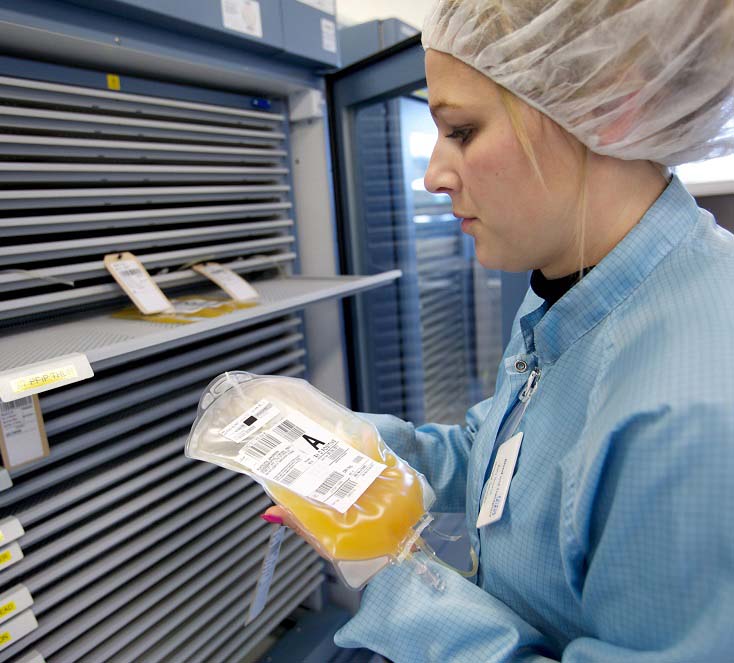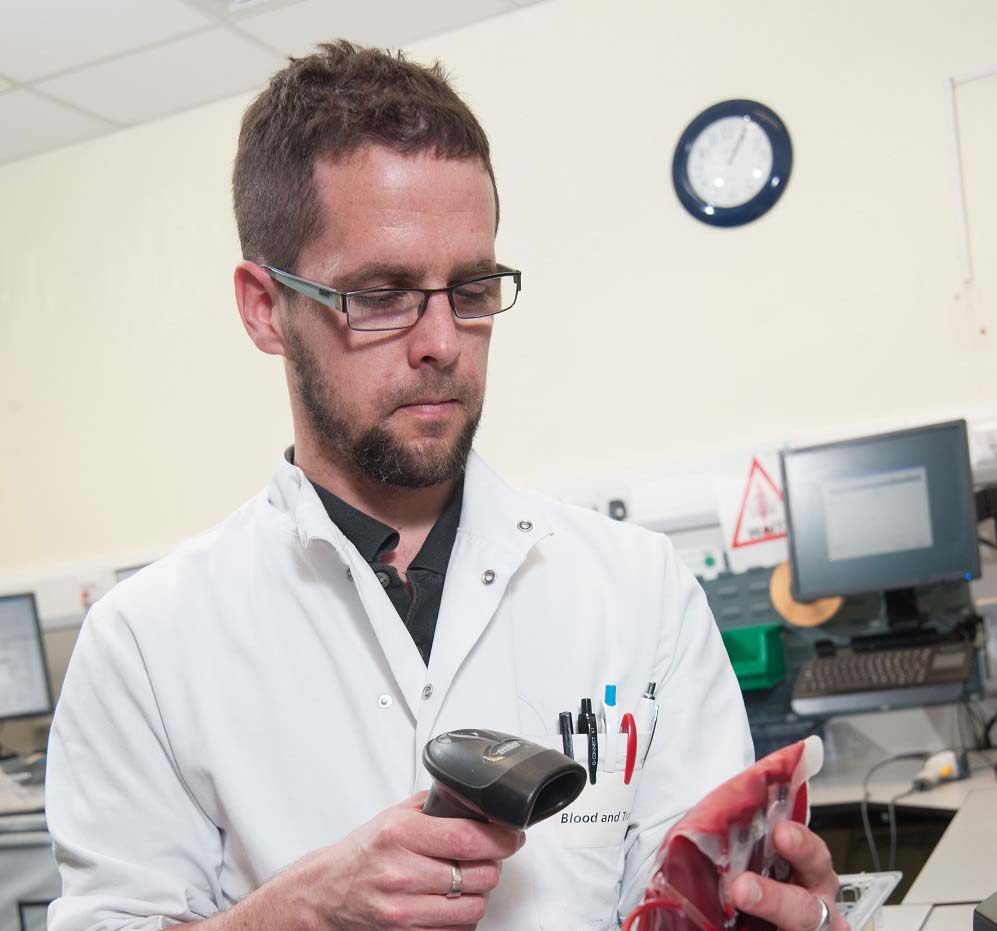How your donation gets to the patient

Your donated blood goes directly into a special bag that contains an anti-coagulant to stop it from clotting. This bag is barcoded – unique to you - to ensure that it can be traced at every stage. This barcode is also put on your Donor Health Check form and blood sample tubes. Being able to trace the donation right the way through its journey to the patient is absolutely vital.
Your donation is placed with all the other donations from your session into insulated bags and they’re taken to the blood centre.
Whilst your donation goes off to the labs for processing, your Donor Health Check questionnaire goes to donor records, and the samples taken with your donation go to the testing labs.
In the processing lab, the blood goes through a process called leucodepletion – the removal of the white cells. Removing these cells reduces the risk of infections such as vCJD being passed to patients, and also reduces the risk of a reaction in the patient receiving the blood.

Donated blood is usually separated into platelets, red cells and plasma using a centrifuge machine that spins the blood very fast. The plasma is driven to the top of the bag, the red cells to the bottom, and the platelets sit in the middle. You can learn more about the components of blood and how they are used here.
A machine then squeezes the bag, separating the components via tubes into different bags. Meanwhile, the samples that were taken with the donation are in the lab. Here they are tested for your blood type (ABO and Rh group and rarer blood types) along with a number of infections, including hepatitis B, hepatitis C, hepatitis E, Human Immunodeficiency Virus (HIV), syphilis, and Human T Lymphotropic Virus (HTLV).
Additional tests may also be carried out, depending on your circumstances and travel history, for example - malaria, T-cruzi, West Nile Virus (WNV) and cytomegalovirus. We may also carry out tests to check your sickle cell status if you are of black, Asian and minority ethnic (BAME) origin. To find out more about the tests we carry out on your blood, click here.

All test results are recorded on your individual donor record. If clear, your unique barcode and blood type are labelled onto the blood pack.
Red cells are stored between two and six degrees centigrade, and can be kept for up to 35 days. Platelets are kept at 22 degrees centigrade, and are kept for only five days. Platelets are stored on special moving shelves that stop the sticky cells from bunching together. Plasma can be kept for up to 12 months at minus 30 degrees centigrade in the deep freeze.
After storage, the final stop is the hospital where your donation completes its journey when it’s transfused into a patient.

You’ll get an SMS on your phone telling you where your donation was used, which we know many blood donors, like John Kemp (pictured), appreciate. John felt that he had seen the benefits of his donation in action, when the little girl of a family friend was diagnosed with leukaemia.
He said, “Pippa, who is five, was recently diagnosed with leukaemia and was admitted to hospital for the start of her chemotherapy on the very same day that I was due to donate blood. I was over the moon to be told a few days later that my blood had gone to Birmingham Children's Hospital to help another child.”
